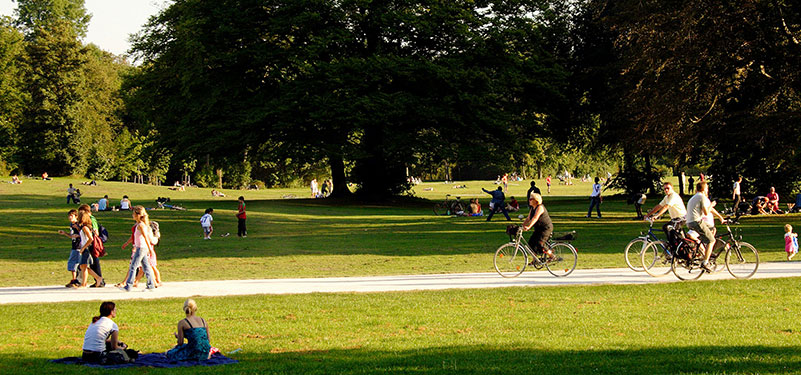Sunscreen Prevents Skin Cancer
contributed by Vanessa Rowan R.N., Cancer AnswerLine
updated 2024
Here's everything you need to know about sunscreen and how to use it

It's important to protect your skin whenever you are outside, because of the risk for skin cancer. The vast majority of melanomas are caused by the sun. In fact, one UK study found that about 86 percent of melanomas can be attributed to exposure to ultraviolet (UV) radiation from the sun. One of the best ways to protect your skin is to apply sunscreen. Do you know which is right for you? Understanding your sunscreen options and the ingredients can be confusing so we put together this guide -- with assistance from the Skin Cancer Foundation -- of reliable information about sun safety and sunscreens:
Why is the sun and tanning dangerous?
Ultraviolet (UV) radiation is part of the electromagnetic (light) spectrum that reaches the earth from the sun. It has wavelengths shorter than visible light, making it invisible to the naked eye. There are two forms of light rays: Ultraviolet A (UVA) and Ultraviolet B (UVB).
UVA
Ultraviolet A (UVA) is the longer wave UV ray and does more damage then UVB rays because they can penetrate deeper into the skin and affect the DNA of the cells.
UVA attacks cell membranes and changes the proteins in the cells. When this happens, changes occur to the levels of collagen and elastin in the skin, leading to wrinkles and sagging.
In addition, changes to the make-up of the skin's cellular structure causes damage to the blood vessels. On your skin, the result is constant redness or what is often called "spider veins" -- those red or purple clusters of tiny blood lines around the nose, cheeks and/or on the chin.
UVB
Ultraviolet B (UVB) is the shorter wave UV ray and is absorbed by the outermost layer of the skin (the epidermis). Too much exposure to these rays cause the epidermis to produce chemicals called inflammatory mediators. These chemicals can seep down beneath the outer layer of the skin, into the middle layer (the dermis) and inflame the blood vessels, which then swell and turn the outerlayer of the skin red.
The UVB rays also affect the genetic material of the skin -- and this damage can lead to skin cancer.
UVB rays are also known to impact the immune system, interfering with the skin's ability to heal itself.
UVB radiation also attacks the skin's pigment cells (melanocytes). When this happens, the cells increase their production of melanin and begin sending more melanosomes to the skin's surface to try to protect against damage to the DNA of these cells. This is what causes freckling and "age spots." For some people -- and with enough sun exposure -- this also leads to melanoma and other forms of skin cancer.
How do sunscreens help?
Sunscreens are products combining several ingredients that help prevent the sun’s ultraviolet (UV) radiation from reaching the skin.
What is SPF?
SPF – or Sun Protection Factor – is a measure of a sunscreen’s ability to prevent UVB from damaging the skin. Here’s how it works: If it takes 20 minutes for your unprotected skin to start turning red, using an SPF 15 sunscreen theoretically prevents reddening 15 times longer – about five hours. Most sunscreens with an SPF of 15 or higher do an excellent job of protecting against UVB.
What does broad-spectrum mean?
Broad-spectrum sunscreens protect the skin from both UVA and UVB rays. Beginning in December 2012, the U.S. Food and Drug Administration (FDA) implemented new rules for “broad-spectrum” products. These regulations establish a standard test for over-the-counter (sold without a prescription) sunscreen products that will determine which products are allowed to be labeled as “Broad Spectrum.”
Who should use sunscreen?
Anyone over the age of six months should use a sunscreen daily.
Children under the age of six months should not be exposed to the sun -- their skin is highly sensitive to the chemical ingredients in sunscreen as well as to the sun’s rays. Cover them with protective clothing and hats when outdoors, and shade them with carrier/stroller covers or umbrellas.
How do you use sunscreen?
Apply 1 ounce (about 2 tablespoons) of the sunscreen on your body. Be generous with your lotion! Sunscreens should be applied 15-30 minutes before sun exposure, regardless of the weather, before sun exposure to allow the ingredient to fully bind to the skin.
Reapplication of sunscreen is just as important as putting it on in the first place, so reapply the same amount every two hours. Sunscreens should also be reapplied immediately after swimming, toweling off or sweating a great deal.
Don’t forget to protect ears, noses, lips, and the tops of feet.
All sunscreens, even those labeled "water resistant," eventually wash off. There is no such thing is waterproof sunscreen.
Does sunscreen "go bad"?
If your sunscreen has an expiration date, don't use it after that date. In general, sunscreens are designed to remain at their original strength for up to three years.
Do dark-skinned people need to wear sunscreen?
Even people with very dark skin can burn and develop skin cancer.
Everyone should protect themselves from the sun.
Is using sunscreen enough to prevent skin cancer?
No matter what sunscreen you use, some radiation always gets through to your skin - so using sunscreen alone isn't enough. When possible, avoid peak sun exposure (between 10 a.m. and 3 p.m.). If you do go out, seek shade and wear protective clothing, including a hat with a brim and sunglasses.
Learn more about skin cancer prevention, detection and treatment
